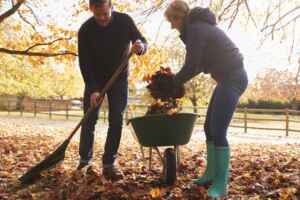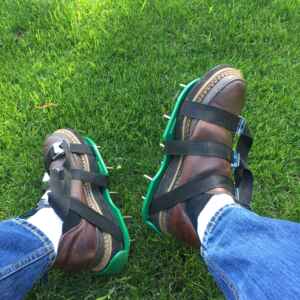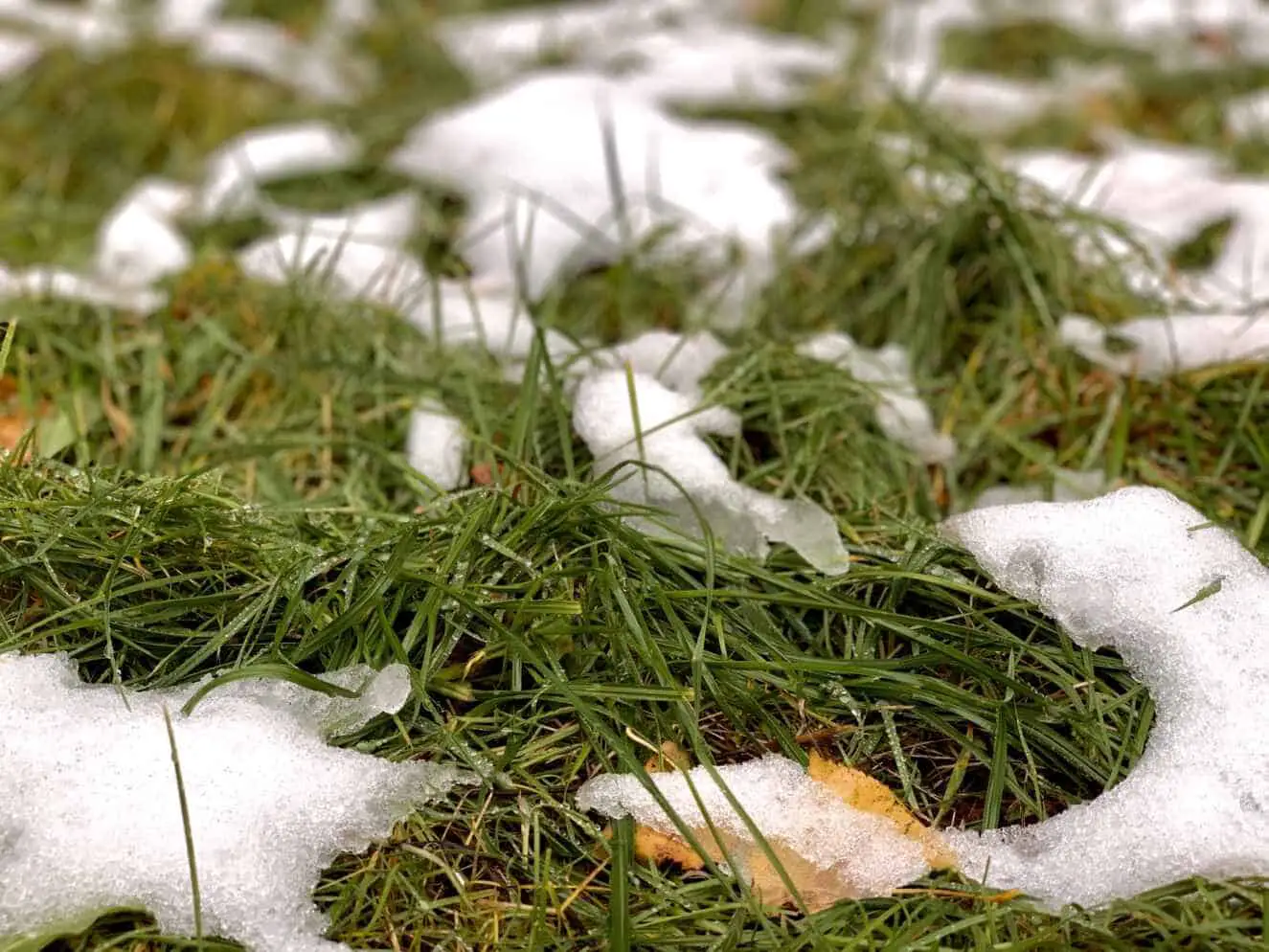How To Repair Winter Damaged Lawn
Although the winter months can be a time of rest, they can also be a time that creates excessive damage to your lawn. Here are 8 tips for how to repair winter damaged lawn.
The time has come to start thinking about how to repair winter-damaged lawns. You have probably been noticing brown patches and areas where the grass is thinning. This is a common problem in colder climates, but there are some things you can do to improve the health of your lawn. By following our tips below, your lawn should be looking great in no time!
1. Rake Up The Debris
The first step in repairing your winter-damaged lawn is to get rid of all the debris. This includes leaves, twigs, branches, and any other objects that may have landed on your lawn during the winter. Be sure to rake up all of the debris so that you can get a good look at the condition of your lawn.
 2. Repair Any Holes Or Cracks In The Ground
2. Repair Any Holes Or Cracks In The Ground
If you have any holes or cracks in the ground, it is essential to repair them. This will help to ensure that water does not seep into the ground and damage your lawn even further. You can use a shovel to fix any holes or cracks in the ground.
3. Add Compost To The Soil
Adding compost to the soil is a great way to help your lawn recover from winter damage. Compost helps improve the soil’s quality, and it also provides your lawn with essential nutrients. You can either add compost to the soil manually or use a fertilizer that contains compost.
4. Water Your Lawn Regularly
It is important to water your lawn regularly, especially during the springtime when it is coming back to life. The best time to water your lawn is in the morning, as this helps to ensure that the moisture has ample time to sink into the ground before nightfall.
5. Aerate The Lawn
Aerating the lawn is another great way to help it recover from winter damage. Aerating allows water, fertilizer, and other products to get deeper into the soil where they are needed more easily.
This results in less damage caused by excess salt from snow plowing or ice from freezing weather. You can either aerate the lawn manually, or you can use a machine that does the work for you. Additionally, aerating can help to reduce soil compaction, which is common in winter.
6. Apply a Fertilizer To The Lawn
Applying fertilizer to your lawn will help it begin its recovery from winter damage. In fact, using a fertilizer can immediately affect your lawn, and it should be darker and healthier after just one day of being applied.
However, if you want optimal results, apply fertilizer once a week for four weeks straight. Be sure to follow the instructions on the package for proper application rates. It is important to fertilize your lawn correctly which we will get into a little later.
7. Rake It Up One More Time Before You Water Again
Before you water again, go ahead and rake your lawn to remove any debris that may have been brought back up from the soil after you applied your fertilizer. This will ensure that your lawn looks its best.
8. Brush The Grass Blades Upward
When you water your lawn, be sure to brush the grass blades upward with a push broom. This will promote healthy growth by helping them stand upright and get access to more sunlight so they can develop properly. Once you have brushed all of the blades upwards, leave the grass alone until the next day so that it can recover from being brushed.
Watch Your Lawn Continue To Recover
Now that you have repaired winter damage in your lawn, sit back and watch as it continues to recover over time! Your lawn should be looking very healthy within a few weeks if you follow all of the tips in this article.
Repairing winter damage to your lawn is not an easy task, but it is well worth it in the end. By following these tips, you can ensure that your lawn will be healthy and looking its best for the upcoming spring and summer seasons!
How To Properly Use Fertilizer
Fertilizer has long been a traditional way for lawns to recover after the winter season takes its toll on them. There are many types of fertilizer, but you should always look for fertilizers containing at least two of the following: nitrogen, phosphorus, and potassium – NPK more colloquially.
This may be visibly displayed on the label or advertised in an advertisement. If it is not, ask your supplier before purchasing.
It is important to note that some types of fertilizer can damage your grass if they are used too liberally, so only use what your lawn needs. If you do not know how much your grass needs, start with a light application and increase the amount you use over time if needed.
Varying the fertilizers that you use can help to balance out your soil levels and ensure that nothing is left behind. This will let your grass make a full recovery after a harsh winter with little input on your part.
A well-balanced soil means more nutrients for the grass to absorb, giving it a better chance of surviving a tough season.
How To Properly Aerate Your Lawn
Aerating your lawn is a process that helps to improve the soil quality and drainage by removing small plugs of soil from the ground. This can be done with a manual aerator, or even better – an aerator machine. If you do not have access to one of these, you can also rent them reasonably cheap.
Once you have aerated your lawn, it is important to water it deeply (at least an inch) so that the soil can re-absorb all of the moisture. Watering your lawn deeply after aerating is key to helping the soil re-absorb all of the nutrients that have been released.
You may need to do this more than once, especially if there has been a long dry spell since you last aerated your lawn.
 Watering Your Lawn In The Winter
Watering Your Lawn In The Winter
Watering your lawn in winter is important to keep it healthy and looking good. Lawns that are watered regularly in winter will stay green, while those that are not will turn a brownish-gray color.
Watering your lawn also helps to protect it from the cold weather. When the ground freezes, the water you have applied will form a layer of ice on top of the soil. This layer will help to insulate the soil and prevent it from freezing solid.
In addition, watering your lawn in winter will help to prevent snow from accumulating on it. Heavy snow can cause damage to lawns, especially if it is not removed quickly. By watering your lawn, you will help create a layer of protection against the snow so that it does not have a chance to damage the blades of grass.
Watering your lawn in winter is a great way to keep it healthy and looking good. Not only will you be preventing damage from heavy snows, but by watering regularly, you will also help to protect against soil shrinkage and erosion. For more information on how frequently you should water your lawn in winter, contact your local expert!
Preventative Steps To Take
It is important when it comes to winter to be proactive instead of reactive when caring for your lawn. There are steps to take that could prevent damage that winter can cause to the lawns. Therefore, here are some preventative steps you can take to protect your lawn from the winter:
- Make sure your lawn is correctly fertilized before the winter sets in. This will help keep it healthy and strong even during the colder months.
- If you have any trees or shrubs near your lawn, make sure to trim them back, so they don’t create too much shade. Too much shade can cause the grass to die off or not grow as well.
- Keep an eye on snow levels. If there is a lot of snow on the lawn for an extended period, it can cause the grass to die. Try to shovel the snow off of your lawn as often as possible.
- If you have a water feature in your yard, make sure to keep it running throughout the winter. A water feature can help keep the ground around it from freezing over.
- Make sure to remove any leaves or other debris that may accumulate on your lawn during the winter. Leaves can block sunlight from reaching the grass, causing it to die off.
- Once winter hits, be sure to monitor your yard for patches of dead grass. If there are spots where nothing will grow, dig them up using a shovel to remove them completely, making sure not to leave any roots or shoots behind. Be careful not to damage surrounding healthy grass – especially if you use chemicals throughout it to kill off weeds during warmer months.

